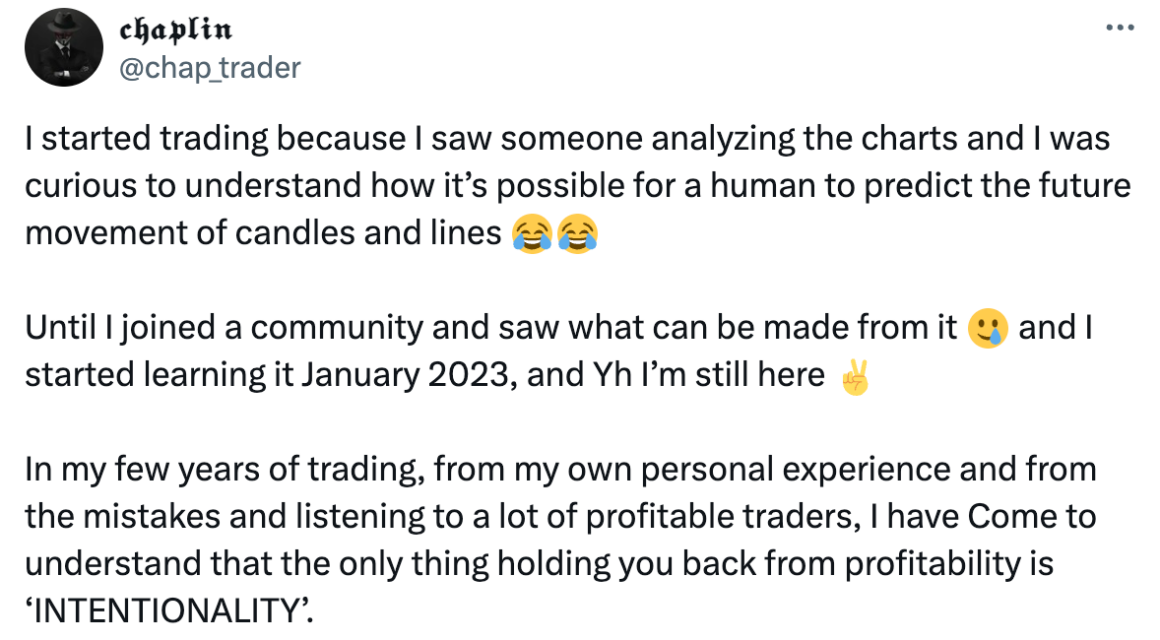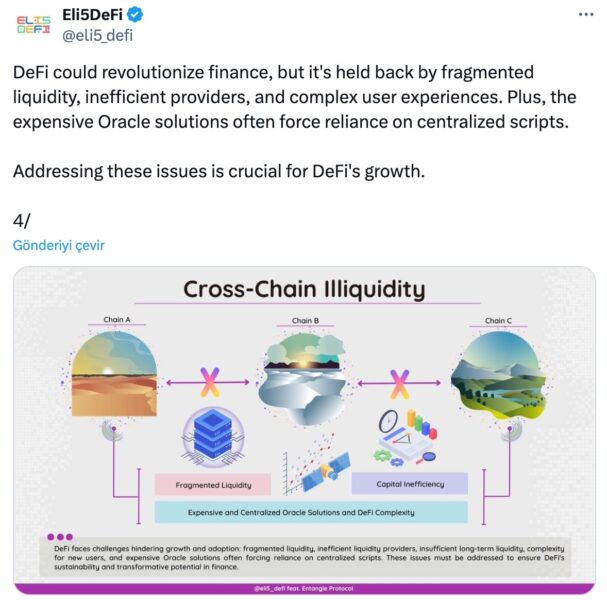Let’s be honest — DeFi is still pretty confusing for the masses.
Navigating multiple platforms, understanding complex protocols, and managing assets across blockchains can be overwhelming. This raises an important question: Is there a way to simplify the decentralized finance (DeFi) experience without sacrificing its core advantages?
Well, there is a way for users to set their money-making goals and let one platform handle every trade afterward. This is intent-based trading, a concept that could redefine how we interact with the DeFi ecosystem.
The main goal of this piece is to explore whether it is just another passing trend or signals the next major leap in financial technology.
What is intent-based trading?
Intent-based trading involves formulating investment goals—such as focusing on eco-friendly tokens or aiming for high returns—and then allowing an automated system to handle the execution.
Traditionally, investors needed to manually manage different wallets, switch between platforms, and keep track of multiple tokens and strategies. With this new approach, the system automatically executes the investment plan across different blockchains, growing assets on autopilot.

Intent-based trading timeline
The evolution of intent-based trading can be traced through several key stages:
Rule-based trading systems (2016-2018):
Initially, intent-based trading was rudimentary, relying on simple rules such as “buy Token A if its price drops by 10%” or “sell Token B if it reaches a 20% profit.” Traders utilized custom scripts or basic trading bots to automate these actions. For example, a bot could execute trades based on specific price movements.
However, these bots operated on single blockchains like Ethereum and were unable to adapt to changing market conditions. As the market expanded and became more complex, there was a growing need for greater flexibility and better risk management across different blockchains.
Signal-based trading (2017-2019):
Building upon rule-based systems, signal-based trading introduced the use of market signals such as algorithm-driven alerts and social media trends. This approach was akin to receiving expert tips or using applications that indicated when a token might spike or drop.
In the DeFi space, platforms like TokenSets and dYdX allowed traders to subscribe to signals from experienced traders. Despite this advancement, many signals were not tailored to individual needs, and managing trades across multiple blockchains remained cumbersome.

Smart contract automation (2018-present):
The popularity of Ethereum and smart contracts enabled traders to automate entire investment strategies directly on the blockchain, eliminating the need for manual intervention.
Platforms like Uniswap and Balancer introduced Automated Market Makers (AMMs), which allowed users to provide liquidity and earn fees automatically whenever others traded those tokens. This innovation reduced the necessity for constant market monitoring or manual trade execution.
Subsequently, platforms like Yearn.finance further enhanced automation by enabling users to deposit tokens into smart contracts that automatically sought out the best yield farming opportunities. Nevertheless, a major limitation persisted: these systems did not interact with each other across different blockchains, similar to the constraints of previous stages.
The birth of cross-chain, intent-based trading (2022-present):
Intent-based trading seeks to address these challenges by shifting the focus from manual execution to goal-oriented automation. MC² Finance is the latest innovation in intent-based trading. It allows users to set investment goals, and the platform automatically executes strategies across multiple blockchains.
This approach leverages advanced algorithms, smart contracts, and cross-chain interoperability to execute trades and optimize yields according to the user’s predefined intentions. By abstracting the complexities of DeFi, intent-based trading has the potential to make the ecosystem more accessible to both novice and experienced investors.
Why intent-based trading matters
Simplified user experience: One of the biggest challenges in DeFi is managing assets across multiple blockchains, each with its own unique requirements and interfaces. MC² Finance solves this with account abstraction, a technique that consolidates all blockchain interactions into a single, user-friendly interface.
Smarter investment strategies: Most automation today is limited to one blockchain, can’t operate across multiple chains, and isn’t adaptable enough to handle rapidly changing markets or complex multichain strategies. MC² Finance’s crowd-sourced intelligence enables you to create and follow self-executing, purpose-driven smart portfolios that are equipped with unparalleled cross-chain capabilities.
Cross-chain liquidity: In traditional trading, token prices can differ across platforms, and in DeFi, this is even more complicated because tokens can exist on multiple blockchains with separate liquidity pools. MC² Finance uses cross-chain liquidity aggregation to solve this problem, ensuring that you get the best price for your trades no matter which blockchain you’re on.
Institutional grade compliance: Even in the smart contract era, to be able to trade, you would need to give up control of your assets and send it to the managing contract of the strategy — giving up control, increasing the risks and even more important, making it incompatible for institutional investors.
With MC² Finance, all assets stay 100% with the investor — either in their wallet, with their custodian or with their bank, making it the first solution to connect institutions, banks and high-net worth individuals with the benefits of DeFi. This feature also offers the potential to launch these strategies via ETPs on European exchanges.
Conclusion
Intent-based trading represents a significant step in making DeFi more accessible and user friendly. Allowing individuals to set their financial goals and leveraging automation to achieve them democratizes access to complex financial strategies that were once the domain of professional traders.
Source: https://cointelegraph.com/news/intent-based-trading-a-fad-or-the-future-of-defi



